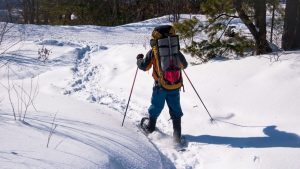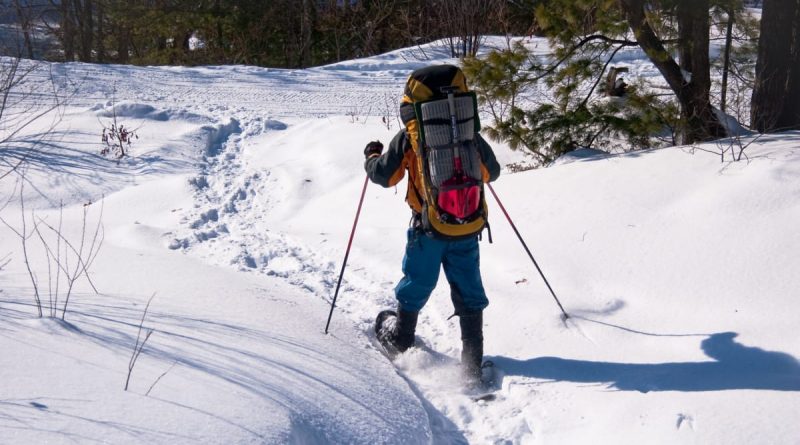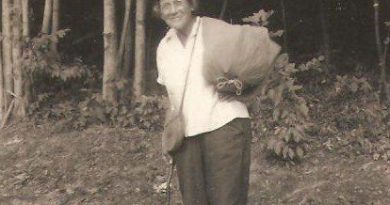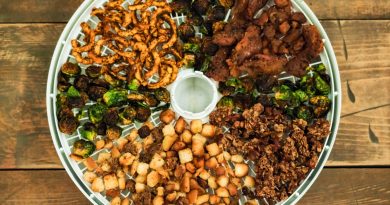The Hike Forever Fitness Plan: Age 35-50
 Get ready for the long fitness haul with these skills, workouts, and essential info.
Get ready for the long fitness haul with these skills, workouts, and essential info.
The Body
Fit hikers in this age range routinely overtake huffing and puffing twentysomethings on big days. That’s because endurance performance reaches its absolute peak in the late 30s. Long-distance runners and most mountaineers achieve their greatest physical potential during this range–but not because of some physiologic overdrive. In fact, muscle strength and VO2max are both on the decline. It’s because muscles are working together with maximum efficiency, says Steve Reichman, assistant professor at Texas A&M’s Department of Health and Kinesiology.

A: Heart Maximum heart rate drops as a result of stiffening tissue, hampering your ability to crush steep inclines. The Fix: Increase stroke volume (the amount of blood pumped through your body with each heart contraction) and efficiency with endurance training. The American College of Sports Medicine recommends upping your exercise to at least 150 minutes per week at 65 to 85 percent of your target heart rate.
B: Muscles Fast-twitch muscle fiber–the type used in sprinting and power moves–decreases between 4 and 10 percent per decade beginning at age 40 in sedentary adults. But slow-twitch muscle–the type used in endurance training–remains strong. The fix: Build power for butt-busting ascents with hill workouts, advises Lynn Millar. Fast climbs up short, steep hills (anaerobic), followed by slow descents (aerobic) force those fast-twitch muscles to work on the way up, while measured descents will hit slow-twitch muscles. Try them in sets of five.
C: VO2Max The maximum amount of oxygen the body uses during strenuous exercise trends downward at a rate of 5 to 15 percent per decade after age 25, says Trent Hargens, Ph.D. The fix: Studies show regular cardiovascular exercise can limit the decline in your VO2 max. Achieve this by building muscle and stressing your cardiovascular system with aerobic exercise (see Muscles).
D: Joints/cartilage/back Height decreases about 1 centimeter per decade after age 40, a result of decreased body water and the compression of the gel-like fluid between vertebrae. The Fix: Kelly recommends reducing accumulated stress with inversion therapy–hanging upside down on a pull-up bar for 15-20 minutes, 3-5 times per week.
E: Bones Bone density reaches stasis as osteoclasts (which trigger bone resorption into the body) catch up to osteoblasts (which create bone). This puts bone density in a holding pattern, but poor nutrition can lead to osteopenia, a precursor to osteoporosis. The fix: Take 1,000 milligrams of calcium per day, drink plenty of D-fortified milk, and eat salmon, tuna, and mackerel, all packed with vitamin D.
Eat Right and Stay in Shape
Nothing combats the early physiological effects of aging like bioflavonoids. Found in fruits (especially citrus and cherries) and vegetables like green peppers, tomatoes, and broccoli, these potent vitamins strengthen connective tissue in the body, increase capillary strength, promote the flow of oxygen and nutrients to organs, tissues, and cells, and help improve recovery times, says dietician Esther Cohen. Cherries, 70-plus-percent cacao dark chocolate, and apricots are all great sources of flavonoids.
Enduro Nuggets
Fight early signs of aging and improve blood flow to vital organs by munching on this vitamin E-packed, bioflavonoid-rich treat.
1 cup dried unsweetened cherries
1 cup almonds (soak in salt water for 6 hours)
1 cup Brazil nuts, halved
1 cup 70-plus-percent dark chocolate chips or chunks
1/2 cup Goji berries
1 cup dried pears, cut small
1/2 cup golden raisins
Recover With Strengthening Yoga
1. Yoga squats Do this fluid pose to loosen tight hips and tone glutes, quads, and calves. Stand with feet shoulder-width apart, toes turned out. Exhale into a deep squat. Inhale, flex your quads and glutes, and stand up, reaching your arms overhead. Do 10 reps on 10 breaths.
2. Dancer’s pose To promote flexibility in your quads and back and improve balance, stand with your feet together and reach your right arm up. With your left hand, reach behind you and grab the arch of your left foot. Push the top of your foot into your palm, lifting your leg and arching your back. Keep your shoulders relaxed. Hold for 3-5 breaths; alternate sides.
3. Wide-legged forward bend Lean back and inhale, clasping your hands behind you. As you exhale, fold your body forward, allowing your straight arms to come up and over your head. Let the crown of your head hang down. Hold 5-10 breaths, return on an inhale, and release your hands.

Train Smart
For the fastest fitness results, calculate–and train within–your target heart rate zone. Easiest formula: 220 – your age X .50 to .85.
Longevity Pose Hip Opener
Big miles lead to tense hips and back muscles, a chronic problem with this ambitious, tightly wound crowd. hip openers release tension by loosening the leg joints (knees and hips) and restoring full range of motion. how: lie on your sleeping pad with the soles of your feet together so your knees splay out. reach your arms overhead and grab your elbows to gently release your shoulders. vary intensity by moving your feet closer or farther from your groin. hold 5-7 minutes, breathing deeply.

100-year hikers
Mountain people on the Italian island of Sardinia reach their 100th birthday twice as often as the rest of us. One of their secrets? Walking through the mountains to find fresh pasture for their sheep.
Trail mix recipes by Esther Cohen (sevenbowls.com)
Yoga poses by Margaret Burns Vap (bigskyyogaretreats.com)
Common Ailment: Overuse Injuries
You don’t have to be an extreme athlete to overdo it, says John D. Kelly. You simply have to surpass your fitness level, which is common at an age when most of us are trying to squeeze more fun into less time. Typical maladies include patellar tendonitis (sharp pain below the knee), Achilles tendonitis, and mild arthritis (often in front of the knee).
Prevent Your first clue is often a twinge or ache right after you stop for a break. Next, you’ll feel pain while you hike. Then you’ll feel it all the time. Change your gait, cut pack weight, rest, and do the hurdler’s stretch to loosen hamstrings. For superstiff knees, stretch quads by lying on your stomach, wrapping your ankle in a T-shirt or ACE bandage, and pulling gently toward your glutes.
Soothe RICE and anti-inflammatories
Strengthen For Achilles, Start stretching and doing calf raises (toes on a stair or piece of wood) daily one month before your hike. For knees, build quad strength with lunges, squats, and single- straight-leg raises.
The article was originally seen at https://www.backpacker.com/skills/fitness-special-mdash-hike-forever-age-35-50
Originally posted 2018-05-05 06:25:49.




